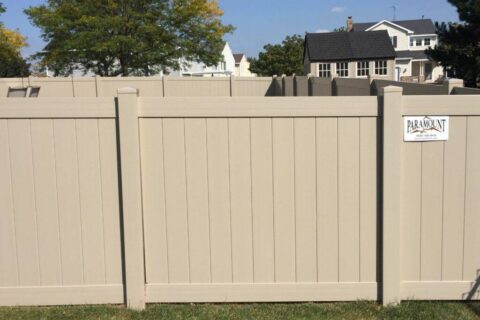Why Can’t Fences Be Over a Certain Height
Fences are a common and essential feature in residential areas, serving not just as physical barriers but also as symbols of security, privacy, and aesthetic appeal. However, the decision to erect a fence may not be as straightforward as it may seem. Beyond the choice of materials and design lies a crucial factor: the height of the fence. This aspect, often overlooked, is governed by a number of local regulations, homeowners’ association rules, and practical considerations. Understanding why there are restrictions on fence heights is important for any homeowner contemplating fence installation. It ensures compliance with legal requirements and neighborhood standards while fulfilling the desired purpose of the fence, be it privacy, security, or beautification.
Local Regulations and Zoning Laws
Local authorities implement fence height restrictions to ensure safety, visibility, and consistency within the community. These regulations, which can range from 3 to 8 feet, help to maintain aesthetics and neighborhood cohesion, and prevent fences from creating visual barriers or disrupting the overall landscape. Tall fences can obstruct sight lines, making it difficult for drivers and pedestrians to navigate safely, especially near roads and intersections.
Homeowners associations and CC&R’s
Many residential communities are governed by homeowners associations (HOAs) or Covenants, Conditions, and Restrictions (CC&Rs), which establish guidelines for fence heights to maintain consistency and uphold the overall vision of the community. Adhering to these guidelines contributes to the overall uniformity and appeal of the community, and failure to comply can lead to legal consequences such as fines or forced alteration of the fence.
Applying for a Variance
If there’s a certain reason you want a higher fence than would be allowed under these laws or HOA rules, you can request a variance. This would normally be done when applying for the permit to build the fence. While you may be able to obtain a variance from your local governing body, you will likely find that the restrictions from your homeowners association will be much harder to circumvent.
Security and Privacy Considerations
Fence heights are often determined based on the need for privacy and security. In densely populated areas, taller fences may be required to shield properties from neighboring buildings or passersby. However, excessively tall fences can detract from the beauty and harmony of a neighborhood, and very tall fences in front yards can obscure drivers’ vision, posing a risk to traffic safety.
Impact on Property Values
The height of a fence can affect the resale value of a home. Fences that are too tall or too short compared to neighborhood standards can negatively impact property valuation. Aesthetic considerations play a significant role in this aspect.
Environmental Factors
Tall fences can obstruct air flow and light and may also impact neighbors’ views. This consideration is particularly important in areas where preserving scenic views or maintaining a certain level of natural light is valued.
Wind Resistance
Taller fences are more susceptible to being knocked over by strong winds. Ensuring that the fence is of a height that can withstand wind and weather conditions is critical for its stability and longevity.
Safety Around Hazardous Structures
In the case of structures like pools, fence height restrictions are critical for preventing accidents and ensuring the safety of children and pets.
Modifying Existing Fence Heights – If a fence is too short or too tall for current needs, it can be modified to increase or decrease the height. Your best bet here would be to call in fencing professionals to handle the job.
The height of a fence is a critical consideration influenced by various factors including local regulations, HOA rules, and the specific needs it aims to address. Whether it’s for privacy, safeguarding pets, enclosing a pool, or defining property boundaries, the appropriate fence height is vital for functionality, compliance, and aesthetic harmony. Homeowners have to navigate these guidelines thoughtfully, balancing personal preferences with community standards and legal requirements. In doing so, they can erect a fence that not only meets their needs but also contributes positively to the safety and visual appeal of their neighborhood.
Give Us a Call!
When you’re ready to select a new fence, or for any questions or concerns about fencing, check with the professionals at Paramount Fence. We have over 100 years of combined experience in providing our customers with the highest quality fencing products. We are a locally owned and operated fence company in the Fox Valley area servicing the Chicagoland Suburbs. We understand that each client is unique, and our fencing experts will work with you to ensure that you are provided with a fence that satisfies your needs for years to come.
We strive to provide excellent customer service, which is why we have been members of the American Fence Association for almost 20 years and members of the local Chicagoland Chapter of the Better Business Bureau (BBB) for almost 20 years. In fact, we have one of the highest customer service ratings with the Better Business Bureau in the area. For more information, visit our website or speak with us at 630-239-2714.


